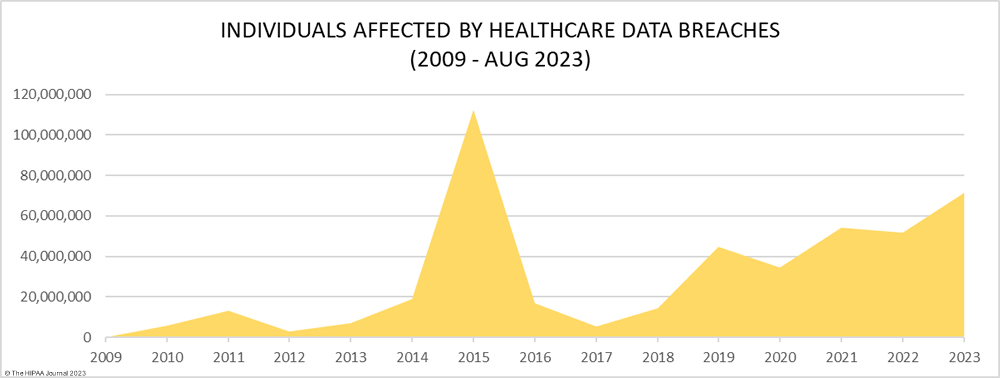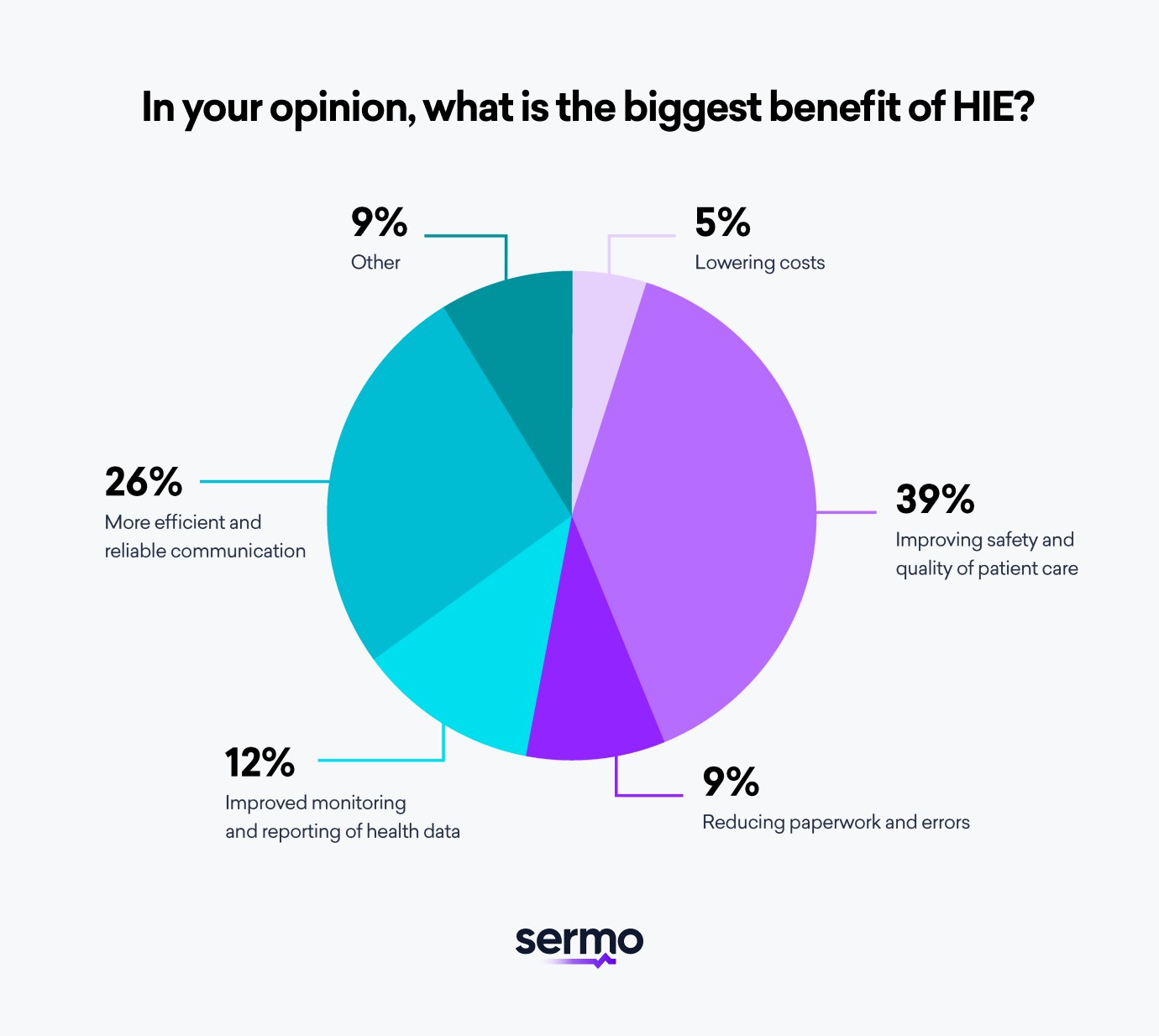In today’s fast-paced world, technology plays a pivotal role in transforming various industries, including healthcare. One such technological marvel that is revolutionizing healthcare management is Health Information Exchange (HIE) software.
HIE software is a game-changer in how it streamlines patient care, reducing costs, and improving overall healthcare efficiency. This blog will go deeply into the area of HIE software, examining its advantages, difficulties, and effects on healthcare administration.
What is Health Information Exchange (HIE) Software?
Health Information Exchange (HIE) is a system that enables the electronic sharing of patient information among healthcare providers.
It allows medical professionals to access, retrieve, and securely exchange patient data, such as medical records, test results, and treatment history. HIE software acts as a bridge between different healthcare facilities, ensuring that patient information is readily available to those who need it, when they need it.
The Current Healthcare Landscape
Before we delve into the benefits of HIE software, it’s essential to understand the challenges faced by the healthcare industry. Inefficiencies, miscommunication, and a lack of interoperability have long plagued the sector. Here are some key statistics to highlight the current state of healthcare management:
- Interoperability Challenges: According to a study by the American Hospital Association, only 18% of hospitals could electronically find patient records from outside providers or sources.
- Healthcare Costs: In the United States, healthcare costs account for a significant portion of the GDP. In 2021, the United States spent 2.7% more on health care, amounting to $4.3 trillion or $12,914 per person.
- Medical mistakes are a big worry, and Johns Hopkins Medicine reports that they cause more than 250,000 deaths each year in the United States.
- Data Breaches: Healthcare is a prime target for data breaches, and according to HIPAA Journal, the healthcare industry saw a 58.4% increase in data breaches in 2020.

The Power of HIE Software
HIE software addresses many of the challenges faced by the healthcare industry, offering a multitude of benefits that enhance healthcare management.

Here are some key advantages:
1. Improved Patient Care
HIE software enables healthcare providers to access a patient’s complete medical history, including past diagnoses, medications, and treatments. This access to comprehensive patient data empowers clinicians to make more informed decisions, leading to better patient care.
A study published in the Journal of the American Medical Informatics Association reported that HIE use reduced hospital readmissions by 30%.
2. Cost Reduction
Efficiency is a cornerstone of HIE software. By eliminating redundant tests, reducing administrative tasks, and preventing medical errors, HIE significantly lowers the overall cost of healthcare delivery.
The Office of the National Coordinator for Health Information Technology (ONC) reported that healthcare organizations can save up to $1.9 million annually by avoiding duplicate tests alone using HIE.
3. Streamlined Workflow
HIE software streamlines the exchange of information between different healthcare providers. This results in reduced paperwork, faster access to patient records, and more efficient coordination among medical professionals, ultimately improving workflow.
A report by the Healthcare Information and Management Systems Society (HIMSS) states that 84% of healthcare organizations saw improvements in the timeliness of care after implementing HIE.
4. Data Security
HIE software is designed with robust security measures to protect patient information. With advanced encryption and authentication protocols, it ensures that sensitive data is secure and compliant with healthcare regulations like HIPAA.
According to the HIPAA Journal, healthcare data breaches cost the industry an estimated $13.4 billion in 2020, highlighting the importance of robust security measures.
5. Telehealth Integration
The COVID-19 pandemic accelerated the adoption of telehealth services. HIE software seamlessly integrates with telehealth platforms, allowing healthcare providers to deliver remote care while still having access to patients’ medical records.
A McKinsey report notes that the telehealth industry has experienced a 50% increase in adoption, with 76% of consumers in the United States reporting satisfaction with their virtual care experiences.
6. Population Health Management
HIE software supports population health management by providing aggregated data that allows healthcare organizations to identify trends, allocate resources efficiently, and implement preventive care strategies.
A report from the Agency for Healthcare Research and Quality (AHRQ) indicates that HIE contributes to a 20% reduction in emergency department visits.
Challenges and Concerns
While Health Information Exchange (HIE) software promises numerous advantages for healthcare organizations, it is essential to recognize the challenges and concerns associated with its implementation:
Privacy Concerns
The exchange of sensitive patient information is a cornerstone of HIE software. However, this very aspect raises significant concerns about data privacy and security. Patients need to have confidence that their personal health information is protected from unauthorized access or breaches.
Healthcare organizations must implement robust security measures, adhere to strict data protection regulations, and maintain the highest ethical standards to ensure the privacy of patient data.
Interoperability
Interoperability is the core objective of HIE software, yet achieving it can be a formidable challenge. Not all healthcare systems and providers are seamlessly connected or equipped with the technology required to share and receive data.
This lack of interoperability can limit the effectiveness of HIE, resulting in incomplete patient information and fragmented care. Encouraging the adoption of standardized data formats and fostering collaboration between healthcare entities is essential to overcoming this obstacle.
Implementation Costs
Implementing HIE software, while promising significant long-term benefits, does come with an initial cost. This expense encompasses not only the acquisition of the software but also staff training, system integration, and ongoing maintenance.
For some healthcare organizations, especially smaller ones with limited budgets, these costs can be a substantial barrier. Addressing this challenge involves exploring cost-effective solutions, grant opportunities, and shared resources to make HIE implementation more accessible.
Resistance to Change
The healthcare industry is notorious for its resistance to change. The adoption of new technology and the alteration of established workflows can face considerable resistance from healthcare professionals. This resistance can stem from concerns about disruption, unfamiliarity with new systems, or skepticism about the perceived benefits.
Overcoming this challenge necessitates effective change management strategies, clear communication, and demonstrating the tangible advantages of HIE software, such as improved patient care and reduced administrative burdens.
Success Stories
Several healthcare organizations have successfully implemented HIE software, reaping the benefits of improved healthcare management. One such example is the Indiana Health Information Exchange (IHIE). IHIE serves over 16,000 healthcare providers and connects to over 100 hospitals and healthcare systems. It has reported numerous successes, including a 95% reduction in duplicate testing and a 73% reduction in medical errors.
The Future of HIE Software
As technology continues to evolve, so does the potential of HIE software. The future of HIE holds promises of even greater efficiency and connectivity. Here are some key trends and developments to watch for:
- AI and Predictive Analytics: Integration of artificial intelligence and predictive analytics will enhance decision support, enabling early disease detection and improved treatment planning.
- Blockchain in HIE: Blockchain technology offers enhanced security and data integrity, making it a promising addition to HIE systems.
- FHIR (Fast Healthcare Interoperability Resources): FHIR, a standard for healthcare data exchange, will further improve interoperability and data sharing.
- Patient Empowerment: HIE software will increasingly give patients greater control over their health data, allowing them to share information with their preferred healthcare providers.
Conclusion
Health Information Exchange (HIE) software is a transformative tool in the field of healthcare management. It not only streamlines workflows, reduces costs, and improves patient care but also has the potential to revolutionize how healthcare data is shared and utilized.
By addressing the challenges and concerns associated with HIE implementation, healthcare organizations can unlock the full potential of this technology. As HIE continues to evolve, it holds the promise of a more interconnected, efficient, and patient-centered healthcare system. Visit https://ismiletechnologies.com/health-information-exchange-hie-services-and-solutions/ now and get your hands on this game-changing technology.








